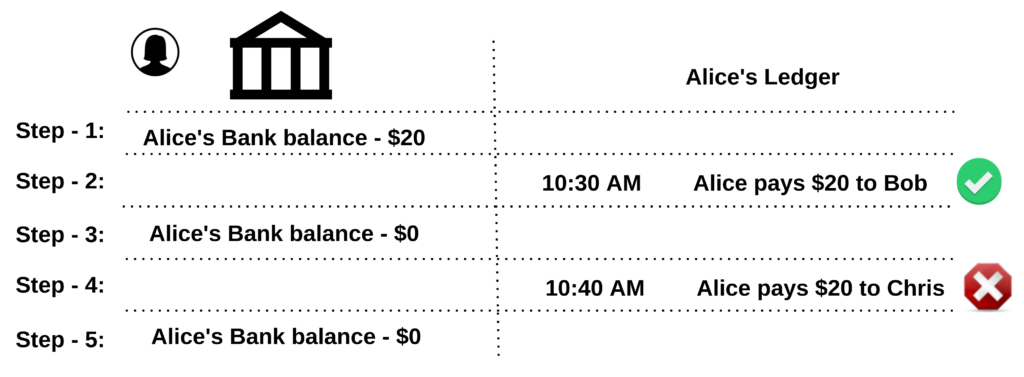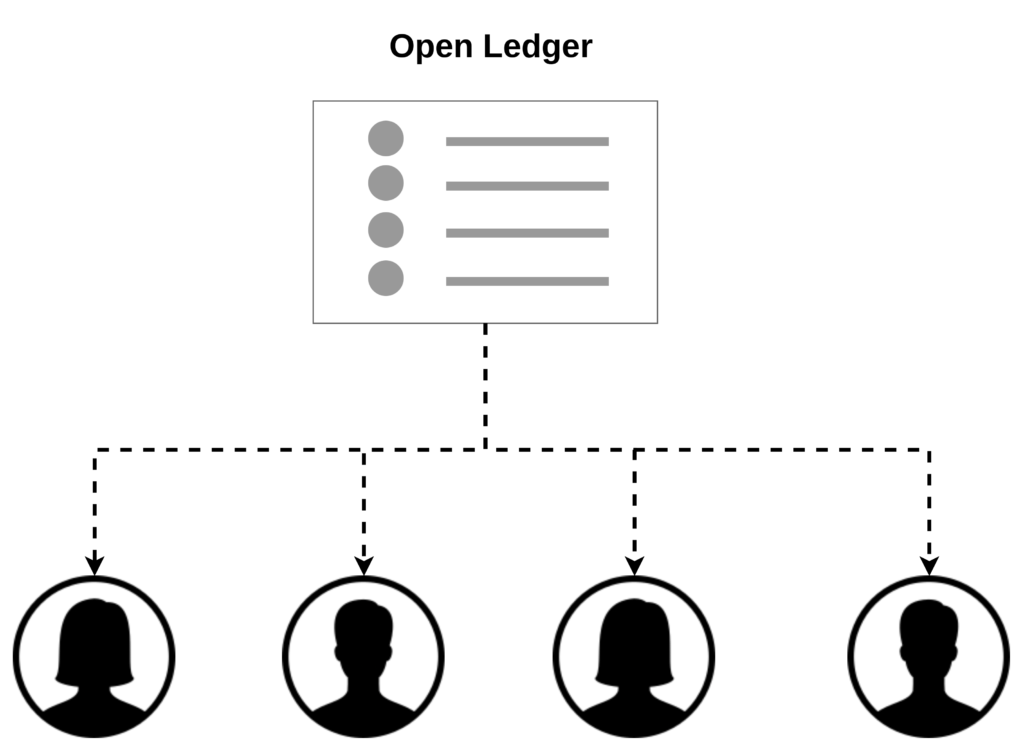Table of Contents
Introduction
Bitcoin was started as a white paper in 2009. Even though billions of dollars of transaction volume occurs every day, very few people really understand;
- What is Bitcoin?
- What is the point behind Bitcoin?
- Why was Bitcoin created?
- The relationship between Bitcoin and Blockchain.
The primary purpose of this article is to explore Bitcoin and also the Blockchain as an industry. As you go over the article, you can also watch my article video here:
What is Bitcoin?
Anonymous persons released Bitcoin’s white paper right after the 2008 financial crisis and called themselves Satoshi Nakamoto. Satoshi created Bitcoin as an experiment out of frustration with the existing financial system. From his paper, Satoshi exhibited a passion for changing the current financial system with some underlying thoughts like;
- What is money?
- Are Federal Reserve and Central Banks all over the world are creating good money?
- Can we make better money?
- What is good money?
- Does money need to be controlled by centralized authorities?
- Why does financial crashes and crisis arise if the created financial system is working in favor of us?
- Do we need banks?
- Can we be our own banks?
- What is the influence of advanced technologies like sophisticated hardware and the internet over money?
- Etc
To understand what is Bitcoin;
Let’s unfold the fundamental question of what money is as mostly as Satoshi explored. We spend most of our time and energy on a given day to earn what we think is money. But, unfortunately, most people don’t think what those numbers are in their bank balance or the papers of cash with them. Instead, all of us want our money to grow.
At the basic level, money needs to have three properties;
- Unit of account: The ability to measure the prices in standard units like dollars, euros, etc. We want to say that “Charge for my services is $20 an hour” or “This course costs $200” and so on. It is essential to understand whether something is expensive or cheap.
- Means of exchange: When two or more parties want to have a commercial relationship, money serves as a middleman for acquiring a product or service from another.
- Storage of value: Money should not change its value drastically over a period of time. Every person has time and energy as their valuable resources, which we trade for money. We want to store the money to use it later and expect it has an equal value as we reserve it.
At the intermediary level, money needs to have following properties that deal with the quality;
- Ability to move and transport easily: Imagine the age of gold used as money. It isn’t effortless to do large transactions, especially in the cross-border. So, money should be easy to move for efficient commerce.
- Durability: Good money should be considerably durable and not wear down quickly.
- Fungibility: The value of your dollar and my dollar shouldn’t change. Physical money should have an equal value to its digital equivalent.
- Divisibility: We should be able to make changes to the enormous sum of money.
At the advanced level, we need to have confidence in our money, and it should be capable of sustaining an economy. Such properties are;
- Dealing with inflation/deflation: Understanding the value of money over time.
- Credit/debt capabilities: For all modern economies to run with ease, the ability to borrow and lend money is essential.
- Supply limit of money: We should limit money supply to maintain its value in an economy.
The money that we have at present, which Central Banks controls, arguably supports all the above properties. Satoshi’s vision behind Bitcoin is to develop money with all the above properties and be decentralized (not controlled by any central authorities).
Let’s understand the perspective of decentralization in practical terms. Say Alice should pay Bob for eating food in his store. Alice can choose to pay using one of the two alternatives – a VISA debit card or Paypal. There are so many middlemen (companies) involved in this payment process. We need to trust them on our money. This process in between them is a highly regulated and hugely expensive one. We can visualize this system as;

In the above system, based upon the transaction’s nature, multiple intermediaries come into the picture. Say Alice has some cash with her and pays in cash to Bob for the food she ate. Now, this is a straightforward process, and we can visualize it as;

This cash transaction removes all of the possible intermediaries and middlemen that we had in the previous system. Eventually, the central banks printed the cash, making Bob think he received the money that deserved his service. But, unfortunately, the cash transactions are not feasible and scalable for more enormous sums.
Satoshi’s vision of decentralization is to have a payment system like cash between Alice and Bob but over the internet. The main goals of Satoshi’s alternate cash system are:
- It should be online and live on the internet all the time.
- We want to get rid of central authorities like banks and other middlemen.
- The two parties (Alice and Bob) involved in a transaction should have faith in the money that it’s worth any given product or service.
Satoshi named this alternate currency Bitcoin. This experiment required Satoshi to invent a lot of unique technologies to achieve the goals mentioned above. Since the invention of Bitcoin in 2009, millions of people now hold it as a store of value, making themselves inflation resistant. Billions worth of transactions happen every day speculating Bitcoin’s price and value. So, we can conclude that Satoshi’s experiment is very successful.
We can visualize a transaction using Bitcoin as;

What is Blockchain?
At the heart of Bitcoin, the technology that made it work is a revolutionary idea called Blockchain. Let’s first understand how a bank maintains transactions. Let’s take the above example of a bank transaction between Alice and Bob. The bank stores a list of all transactions that a person makes in their database with their timestamps and calls it a ledger. Such maintenance of the ledger avoids a fundamental problem called double spending.
Say Alice’s bank account has only a $20 balance and the cost of food she ate in Bob’s shop also costs $20. Now, as she pays Bob at 10:30 AM, the transaction is recorded in her bank statement in the bank’s database called ledger. So, Alice cannot send the same $20 to Chris at 10:40 AM as she already spent them once and the ledger stored it. We can visualize this double-spending scenario as follows;

Satoshi faced the challenge of maintaining such a ledger that any central authority didn’t control. Satoshi designed the solution to make the ledger available to everyone, and anyone can choose to validate a given transaction. The ledger lives on the internet all the time and is open to all;

This revolutionary idea removes the dependency of trusting any central authorities like banks to maintain our ledger. For efficient ledger processing, a few are grouped into blocks instead of having an infinite list of transactions. Blocks are connected one after the other as they get created in the form of a chain, and they named the chain of blocks as Blockchain. Once done, a transaction is stored forever in the ledger and can’t be changed as everyone has access to it. We can visualize Blockchain as;

For the Blockchain work at scale, Satoshi invented some great technologies beyond the scope of this introductory session. So, Satoshi used mathematics and computer science to create the Blockchain. In essence, Blockchain is a database of facts and stores all the unchangeable history without requiring a trusted third party. The Blockchain network by itself simulates the process of verification of all the transactions.
Blockchain Industry
The most outstanding projects of the world in history are the projects out of frustration. The idea of trustless financial transactions out of frustration on trusted central authorities inspired people to think;
- The world is not just about financial transactions
- There are so many places where we’re trusting third parties to do that we don’t want them to do
- Can we change the nature of all the transactions to be implemented in a trustless way using Blockchain?
People started to think of places where they didn’t want to trust others. Some of them are:
- Voting: We’ve known that Blockchain is an open database of facts. So, people dreamed of a scenario where they would like to;
- Verify that their vote was counted for sure.
- Verify whether the vote is accurately counted on their decision of the party.
- Land and Properties: The majority of people take it for granted for having a stable system in place. A government department manages the ownership of properties, which they can alter if they’re corrupt. Think of the current situation where the Taliban took over Afghanistan. All the hard-earned property of a person might go out of their ownership in such rebellion conditions. If a blockchain records the unchangeable history of property rights, we can resolve property issues as the system stabilizes.
- Identity: Government institutions maintain your personal identity. Also, so many private entities maintain your credit scores. Currently, your identity is given to you in cases like;
- You’re issued a passport.
- You’re issued a driver’s license.
- Etc.
Any of the authorities can change any of your information if they’re corrupt and if it’s in their best interest. We all wouldn’t want those attacks to happen to us.
So, the same core principles of decentralization and getting rid of middleman has emerged into a whole Blockchain industry.
Conclusions and Closing Thoughts
Currently, political authorities rule states and countries. Also, the world is becoming very globalized that an issue that’s happening in the other corner of the world will somehow affect us. Thousands of transnational deals are happening every day, which is a massive concern in scripting any state’s or country’s policies. For example, any of the food you eat daily might be from a different country. So, as we would like to remove the trust-based central authorities and private entities with the help of Blockchain, a fundamental question is;
- Who is in charge of us?
In the past, kings and the king’s court were in charge of the kingdom’s people. At present, political entities and large businesses are in charge of the ordinary person. As we remove the trust and middleman for any transaction, NO ONE is in charge of us. We want to find ways to do business using Blockchain without trusting each other of the counter-parties. Some of the numerous capabilities that an ordinary person gets using Blockchain are;
- We will be our own banks
- We are self-sovereign
- We are in charge of our future
- We would be able to realize the real democracy
- We all can verify whether the systems that are working for us are working properly
- The systems work the same for the richest and the poorest of the world
The whole point of the blockchain industry is trust regulation. So, Blockchain puts YOU in charge.
